The advent of reconstituted tobacco leaf has captivated the tobacco industry, paving the way for the creation of premium American cigarettes that provide a new level of smoking pleasure. Recent advances in reconstructed tobacco technology have completely transformed blending and processing techniques, enabling the creation of high-quality, profitable tobacco products that resonate with consumers. To appreciate the importance of reconstructed tobacco, you need to understand the complex technical aspects and how they affect the tobacco industry.
Reconstructed tobacco plays an indispensable role in determining the sensory properties and chemical composition of the primary smoke stream and in shaping the physical characteristics of CMA products. Manufacturers need to be well versed in these parameters, as they are critical to meeting stringent sensory and chemical safety standards for CMA products. With the advent of next-generation reconstructed tobacco, tobacco companies can offer consumers better and safer tobacco products, improving the smoking experience like never before.
Also, the use of reconstructed tobacco has resulted in less waste and a greener approach to tobacco production. As the tobacco industry has evolved, the integration of reconstituted tobacco has allowed for more efficient and profitable methods of tobacco production, pushing the industry to new heights. The role of reconstructed tobacco in tobacco production must be understood because it promotes continuous progress and innovation in the industry.
Reconstructed tobacco is also a valuable tool for product development. By manipulating the physical and sensory characteristics of tobacco, manufacturers can create products that meet a wide range of consumer preferences. Research in psychology and cognitive sciences shows that consumers are more likely to buy products that match their self-perception or sense of identity. By incorporating reconstructed tobacco into their products, manufacturers can create tobacco blends that resonate with different consumer identities, increasing brand loyalty and product appeal.
Despite the many benefits of reconstructed tobacco, it’s worth noting that not all industry experts agree. Some argue that reconstructed tobacco can disrupt the tobacco’s natural flavor and aroma, resulting in a less enjoyable smoking experience. Besides, critics raise concerns about the potential health risks associated with reconstructed tobacco, including increased exposure to harmful chemicals.
Besides, it is clear that reconstructed tobacco plays an important role in today’s tobacco industry. As technology advances and consumer preferences evolve, reconstituted tobacco will remain a key tool for manufacturers seeking to create high-quality, profitable tobacco products that meet diverse consumer preferences.
What is reconstructed tobacco?
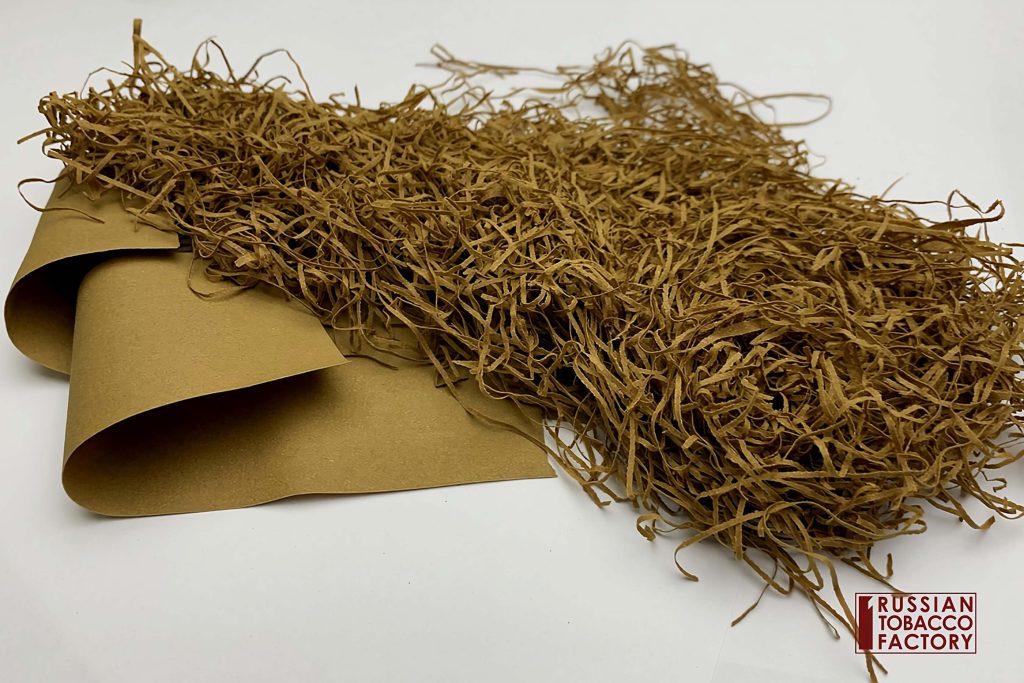
Reconstructed tobacco, a term for converting tobacco byproducts such as leaf waste, dust and tobacco fines into usable tobacco leaf for cigarette production, has gained momentum in recent years. Traditional tobacco production is accompanied by loss of moisture and by-products, resulting in a 22-32% loss, making only 68-78% of the tobacco particles usable. These by-products amount to as much as 25 kg for every 100 kg of dried tobacco and cannot be used in their current form, making processed tobacco an viable solution.
More than 50 years ago, a process for producing reconstituted tobacco was developed to make cost-effective use of tobacco byproducts. The main goal is to get a product comparable to natural tobacco in primary processing and cigarette production. Over time, various methods of producing reconstituted tobacco have been developed, the most popular of which is the paper-based method, which produces a variety of high-quality tobacco sheets with desired physical, chemical and smoking properties. Although the solution method is used to a lesser extent, it remains an important contender.
Reconstituted tobacco technology has played a vital role in improving the efficiency and quality of cigarette production. Today, it is a vital component of any high-quality and profitable American Blend brand of cigarettes. The advent of advanced reconstituted tobacco technology has led to effective and progressive tobacco blending and processing methods. These techniques help to shape the sensory properties and chemistry of the main stream smoke, while ensuring that the product meets the requirements for acceptability and safety. The continued development of this technology will play a crucial role in the future of the tobacco industry.
Solution Method
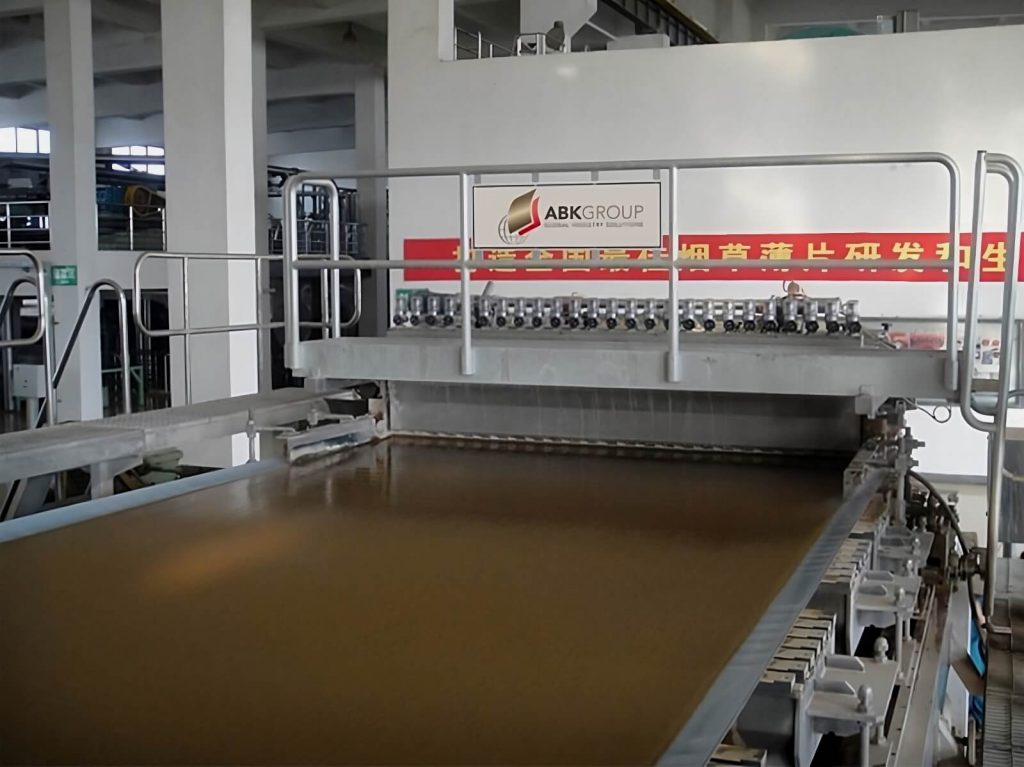 .
.
Reconstituted tobacco is created by combining crushed and mixed tobacco by-products to produce particles of a certain size. These particles are then mixed with a solution containing adhesives such as natural adhesives (e.g., gar gum or tamarind), modified starch, industrial cellulose (e.g., hydroxymethyl or carboxymethylcellulose), or pectin extracted from tobacco stems. A binder or cellulose fiber may also be added to bind the mixture.
The resulting paste is molded into a sheet by casting or extrusion. In the casting method, the paste is poured onto a moving stainless steel conveyor, while in the extrusion method, the paste is pressed through steel rollers or extruded through the head of an extruder. The sheet is then dried to remove excess moisture, sliced and packaged.
Before, the pectin in tobacco was converted to water-soluble ammonium spectate using ammonium phosphate (DAP). Today, but, this pectin-release process is no longer used, as some leading cigarette manufacturers have switched to casting reconstituted tobacco using guard gum.
This meticulous process of creating reconstituted tobacco is very important to the cigarette industry because it allows manufacturers to create products with desired physical, chemical and smoking properties while using byproducts that would otherwise go to waste.
Paper method
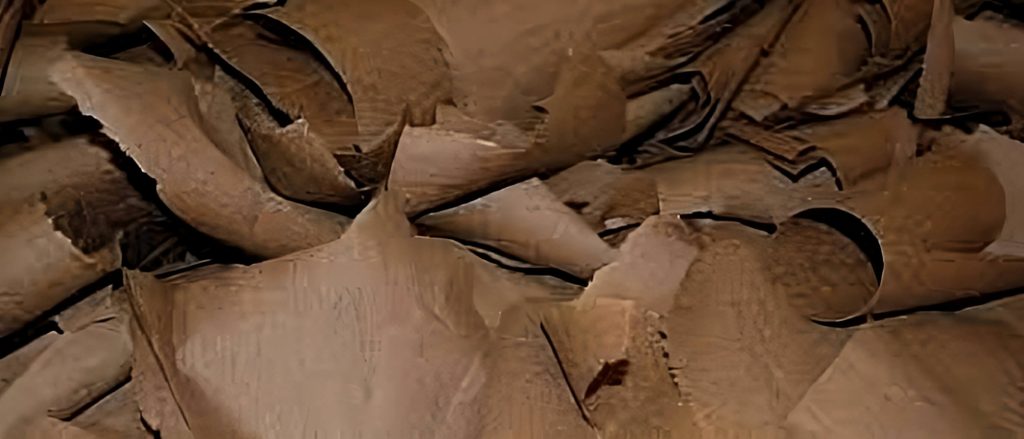 .
.
In recent years, significant advances in tobacco processing technology and chemistry have led to a new generation of reconstituted tobacco produced using the paper method. The method has many advantages, including increased efficiency and the ability to produce a high quality reconstituted tobacco that can be used in a wide range of cigarettes and cigars.
To produce reconstituted tobacco using the paper method, tobacco byproducts such as stems, waste, and tobacco dust are mixed in specific proportions to reflect the composition of the cigarette mixture and achieve product development goals. If there are few stems in the mixture, natural cellulose fibers may be added to strengthen the final product.
The by-products are then soaked in water while stirring and shaking. The resulting water with dissolved components (extract) is separated from the insoluble parts (cellulose). The pulp is refined, and the tobacco extract is subjected to a concentration process by removing excess liquid.
The refined pulp is mixed with water and run through the molding equipment to produce a basic sheet, which is then dried and sprayed with concentrated tobacco extract. Before spraying, various additives such as sugar and moisture retaining agents may be added to the tobacco extract for pre- and post-juicing.
The resulting reconstituted tobacco is dried, sliced and packaged in cardboard boxes for storage. The size and shape of the cut tobacco depends on the requirements of the final product.
Omit, the paper-based method of reconstituted tobacco production has improved the efficiency and quality of tobacco processing and has enabled the production of a range of high-quality reconstituted tobaccos that meet the requirements of both manufacturers and consumers.
Major advances
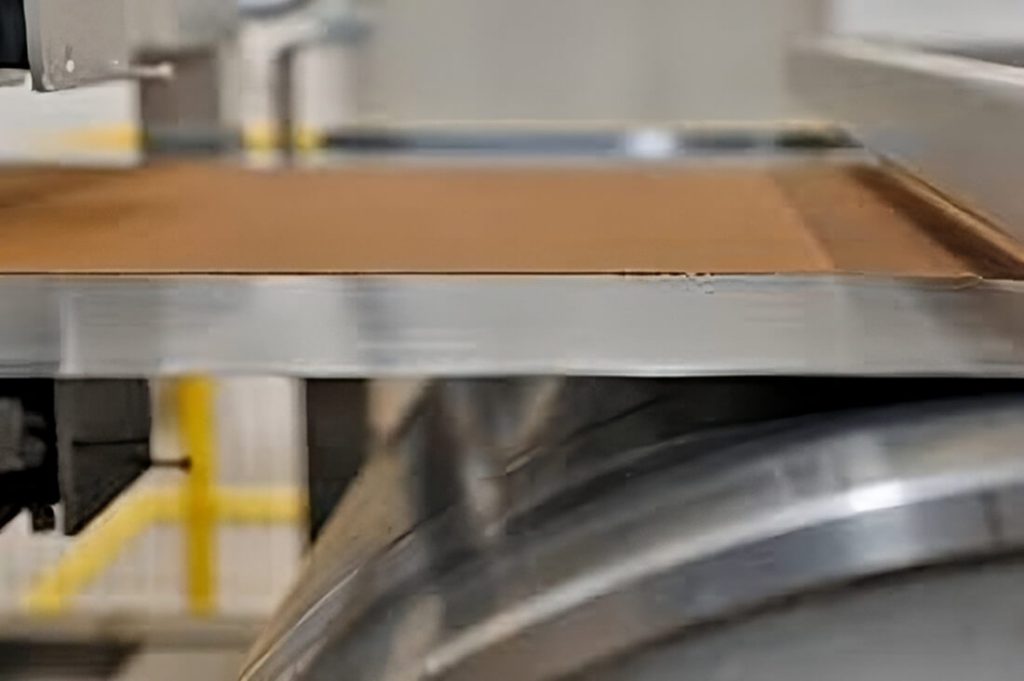 .
.
Reconstituted tobacco production has undergone significant technological change, particularly with the paper method, resulting in distinctive and novel smoking products. By combining different ingredients and additives, manufacturers can improve the smoking experience, making reconstituted tobacco an important ingredient in American Blend cigarettes and other smoking products.
To create an exceptional smoking experience, manufacturers use a variety of flavorings, including sugars and water-holding compounds, while others add HFCS55 and ammonia compounds to the extract to create amino sugars that contribute to the desired smoke bouquet. The paper method allows reconstituted tobacco to be produced without the use of cellulose, but manufacturers can add it to the by-product mixture to meet customer requirements if necessary.
With these advances in reconstituted tobacco technology, manufacturers can create a variety of profitable products that meet the needs of different consumer groups, ensuring that the smoking experience remains innovative and exciting. What is reconstituted tobacco used for?
The advent of reconstituted tobacco was aimed at reducing production costs. Besides, it has become a key component of modern tobacco products. This is due to its ability to improve the physical and sensory properties of the final product, as well as change the chemical composition of the smoke, which leads to a more enjoyable smoking experience.
Key benefits
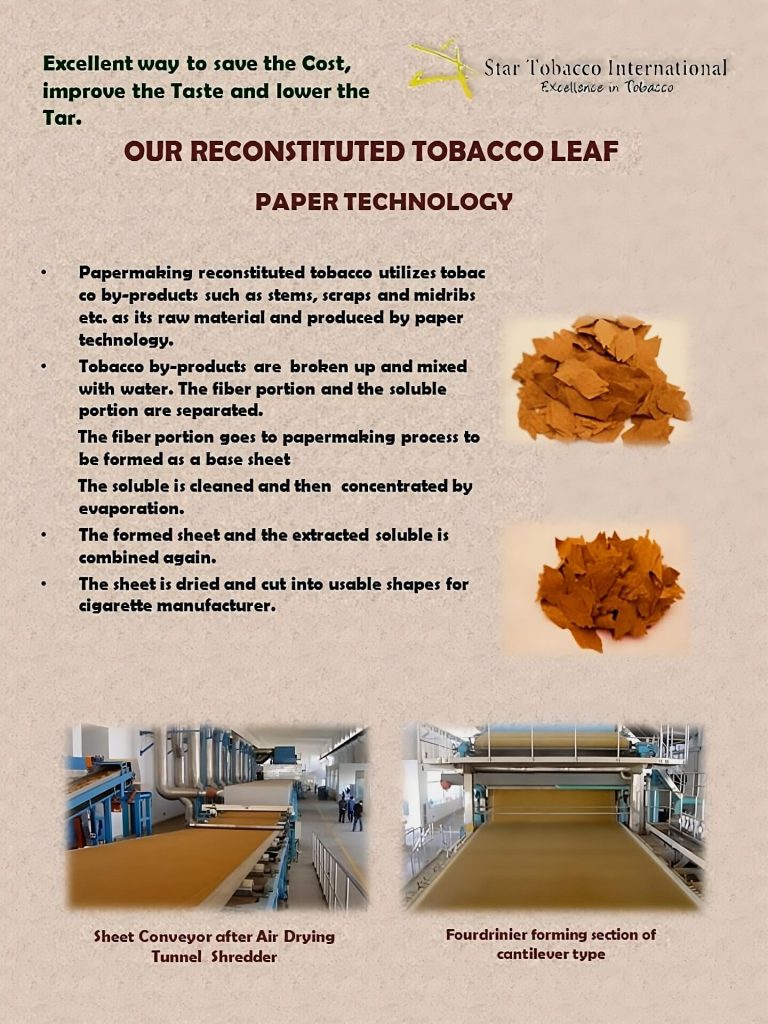 .
.
Reconstituted tobacco, especially when produced by the paper method, offers many advantages in tobacco product development. These benefits include improved physical properties, such as increased fillability and improved processing of cut rag tobacco. The chemical composition of the smoke is also improved, reducing tar and nicotine content. Also, smoking properties are improved, which helps preserve the taste, aroma and tactile characteristics of the tobacco product.
Advances in manufacturing technology have made it possible to produce reconstituted tobacco by the paper method without the use of additives, which was not possible with the solution method. This has made it possible to expand the range of reconstituted tobacco products with improved quality, satisfying a variety of consumer needs and preferences.
Chemical composition of smoke
The chemical composition of tobacco smoke is far from uniform and can depend on many factors, including the by-products used and the manufacturing process of reconstituted tobacco. Reconstituted tobacco produced by the paper method, for example, contains less tar compared to the original by-products. In fact, the average resin content of tobacco by-products containing 20 mg of resin when produced by the paper method yields approximately 10 mg of resin, which is lower than the 15 mg when produced by the dissolution method. Also, reconstituted tobacco produced by the paper method results in lower carbon monoxide (CO) content in the main smoke stream compared to the original byproducts, whereas the solvent method increases the CO content in the smoke.
Adding reconstituted tobacco to the mixture can also improve the fillability of the product, resulting in a higher burning rate, resulting in fewer puffs per cigarette and thus less tar consumed in the smoke. Besides, reconstituted tobacco may play a significant role in reducing the biological activity of tar carcinogens. Indeed, the biological activity of reconstituted tobacco smoke, especially when produced by the paper method, is about 70% lower than that of natural tobacco smoke. These results suggest that reconstituted tobacco produced by the paper method has the potential to be a safer alternative to natural tobacco smoke.
Acceptability and Applicability
It is important to understand that although reconstituted tobacco has a lower tar content in the smoke, it may not reduce the tar content in the smoke of the final cigarette. But, tobacco experts and processors prefer reconstituted tobacco with better tobacco flavor and manufacturability, even if its tar content is higher than that of other reconstituted tobacco. This is because the resin content of the smoke can be regulated by other components of the blend, such as the tobacco in the puff, or cigarette design through factors such as weight and density, paper filters, self-curl paper, pressure differential, ventilation, etc. Thus, to. To create high quality smoking products, manufacturers must . The sensory characteristics of reconstituted tobacco and its chemical composition, particularly resin and nicotine content.
The use of reconstituted tobacco
In cigarette manufacturing, reconstituted tobacco has become the primary ingredient in producing a high quality, profitable product.
Today, the focus is on optimizing the use of reconstituted tobacco to achieve the desired sensory properties and chemical smoke composition while reducing costs. The challenge is determining the required amount of reconstituted tobacco to use in the mixture.
To achieve the optimal amount of reconstituted tobacco, two main methods are used: the substitution method and the
substitution method and addition method. The substitution method involves or completely replacing one or natural ingredients with reconstituted tobacco, while the additive method involves adding reconstituted tobacco in proportion to the quantity of reconstituted tobacco. The addition method involves adding reconstituted tobacco in proportion of all the other ingredients.
Manufacturers must consider these methods to achieve an ideal balance between the sensory properties and chemical composition of the smoke while reducing costs and maximizing profitability. It is important to note that. The inclusion of reconstituted tobacco can be a cost-effective way of replacing expensive natural tobacco ingredients in blends without compromising smoking experience.
Here’s a comparison table of the two methods of producing reconstituted tobacco leaf*:
| Method | Paper method | Solvent method |
| Description | Reconstituted tobacco is produced by dissolving the tobacco into a liquid, then spraying it onto paper or a carrier material. | Reconstituted tobacco is produced by dissolving the tobacco into a liquid, then separating the insoluble materials and drying them to form a sheet. |
| Chemical composition | Results in less carbon monoxide (CO) in the main smoke stream compared to the original by-products, and reduces tar and nicotine levels. | Increases the CO content in the smoke somewhat. |
| Resin content | Typically produces reconstituted tobacco with a resin content of approximately 10 mg. | Typically produces reconstituted tobacco with a resin content of approximately 15 mg. |
| Biological activity | Approximately 70% lower than the biological activity of natural tobacco smoke. | Not specified. |
| Advantages | Produces reconstituted tobacco without additives. | Preserves more of the original taste and aroma of the tobacco. |
| Disadvantages | More difficult to process and requires additional equipment. | May require the use of additional additives to achieve desired properties. |
*Note that this table is not exhaustive and there may be other factors to consider when choosing between these methods.
Reconstructed tobacco has become a critical component in the modern tobacco industry, as it offers several benefits, such as increasing efficiency, improving product quality, and enhancing profitability. Despite concerns about the potential health risks and natural taste and aroma of tobacco, the benefits of using reconstructed tobacco cannot be ignored. With the latest advancements in reconstructed tobacco production technology, manufacturers can now control various parameters to ensure compliance with safety standards while producing high-quality and profitable tobacco products. It is vital for manufacturers to stay up-to-date with the latest techniques and advancements in reconstructed tobacco production to meet the changing demands of consumers and maintain a competitive edge in the market.